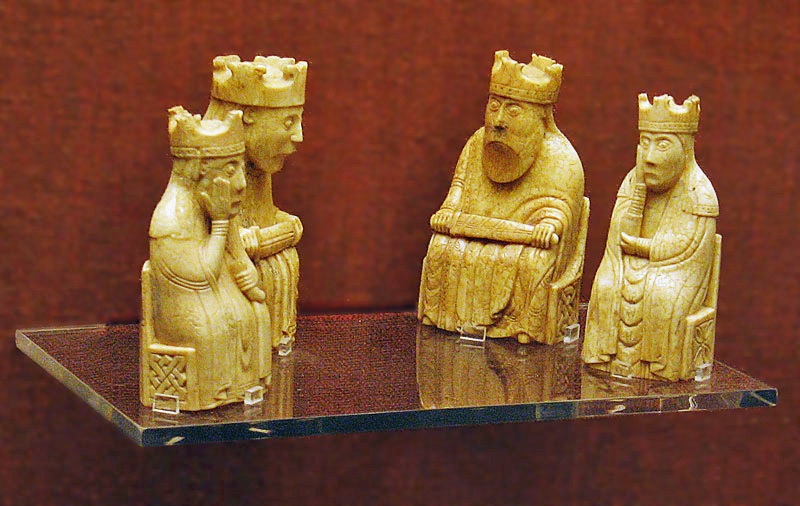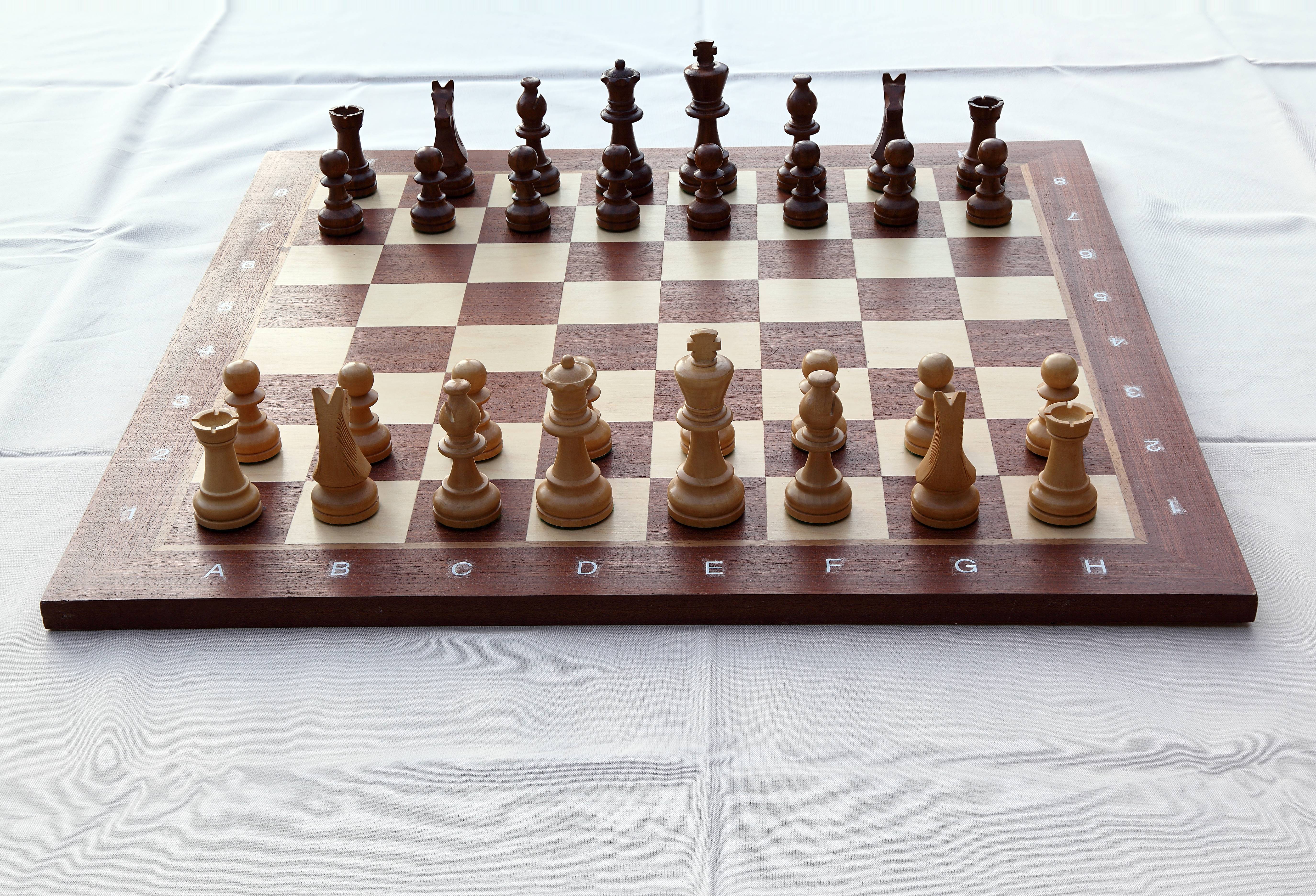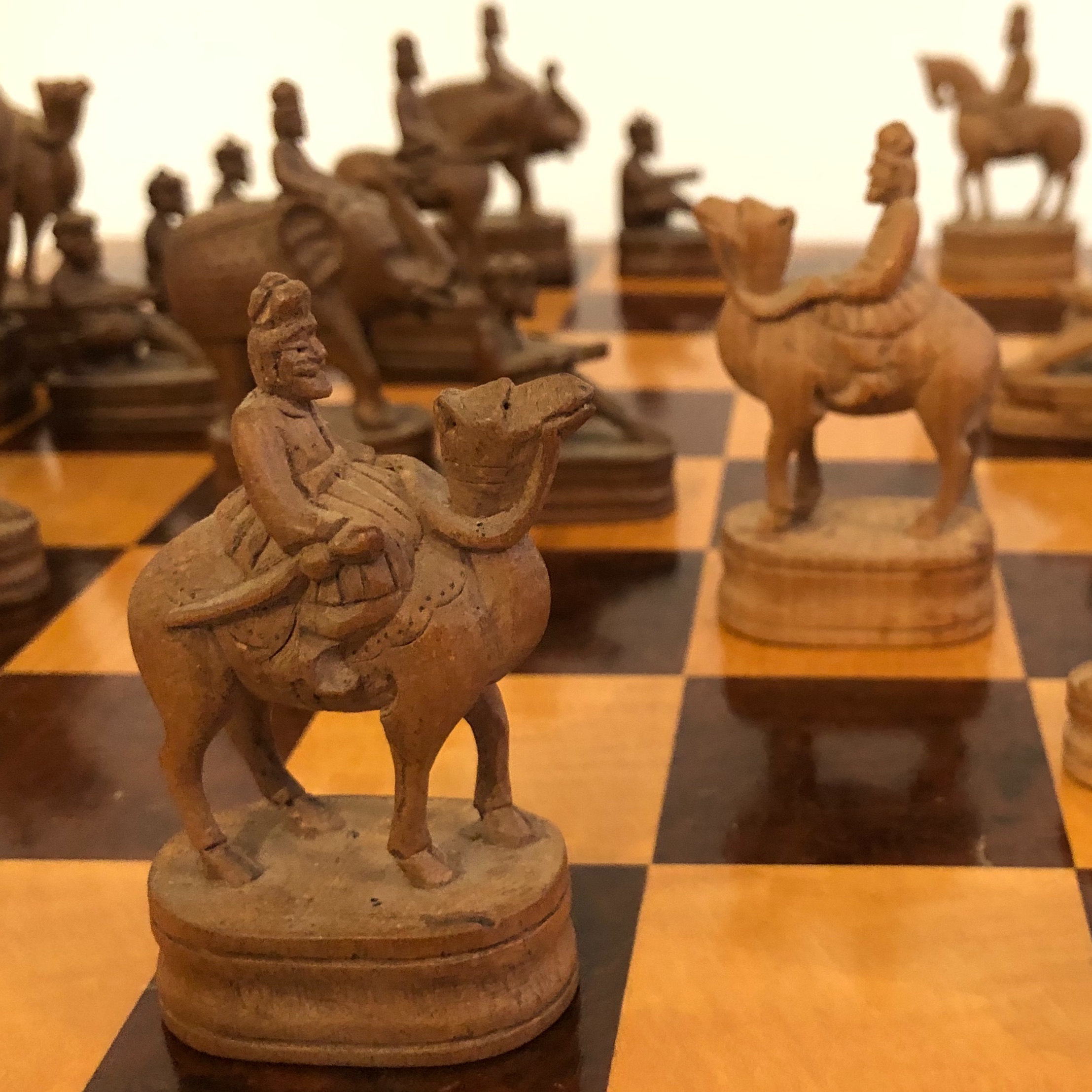|
Chessmen
A chess piece, or chessman, is a game piece that is placed on a chessboard to play the game of chess. It can be either White and Black in chess, white or black, and it can be one of six types: King (chess), king, Queen (chess), queen, Rook (chess), rook, Bishop (chess), bishop, Knight (chess), knight, or Pawn (chess), pawn. Chess sets generally come with sixteen pieces of each color. Additional pieces, usually an extra queen per color, may be provided for use in Promotion (chess), promotion. Number of pieces Each player begins with sixteen pieces (but see the #Usage of the term piece, subsection below for other usage of the term ''piece''). The pieces that belong to each player are distinguished by color: the lighter colored pieces are referred to as "white" and the player that owns them as "White", whereas the darker colored pieces are referred to as "black" and the player that owns them as "Black". In a standard game, each of the two players begins with the following sixteen ... [...More Info...] [...Related Items...] OR: [Wikipedia] [Google] [Baidu] |
Lewis Chessmen
The Lewis chessmen ( no, Lewisbrikkene; gd, Fir-Tàilisg; sco, Lewis chesmen) or Uig chessmen, named after the island or the bay where they were found, are a group of distinctive 12th-century chess pieces, along with other game pieces, most of which are carved from walrus ivory. Discovered in 1831 on Lewis in the Outer Hebrides of Scotland, they may constitute some of the few complete, surviving medieval chess sets, although it is not clear if a set as originally made can be assembled from the pieces. When found, the hoard contained 93 artifacts: 78 chess pieces, 14 tablemen and one belt buckle. Today, 82 pieces are owned and usually exhibited by the British Museum in London, and the remaining 11 are at the National Museum of Scotland in Edinburgh. Additionally, a newly identified piece, a "warder", the equivalent of a castle or rook, was sold for £735,000 in July 2019. Four other major pieces, and many pawns, remain missing from the chess sets. Origin Most accounts ha ... [...More Info...] [...Related Items...] OR: [Wikipedia] [Google] [Baidu] |
Staunton Chess Set
The Staunton chess set is the standard style of chess pieces, recommended for use in competition by FIDE, the international chess governing body. The journalist Nathaniel Cooke is credited with the design on the patent, and they are named after the leading English chess master Howard Staunton, who endorsed it; the first 500 sets were numbered and hand-signed by Staunton. This style of set was first made available by Jaques of London in 1849, and it quickly became the standard. The set style and its variations have been used around the world since. Old-style chess sets During the late 18th century and early 19th century, the increased interest in the game of chess, particularly in international play, brought about a renewed demand for a more universal model for chess pieces. The variety and styles of the conventional form, which began in the 15th century, had expanded tremendously by the beginning of the 19th century. Conventional types popular during ... [...More Info...] [...Related Items...] OR: [Wikipedia] [Google] [Baidu] |
Chess Set
A chess set consists of a chessboard and white and black chess pieces for playing chess. There are sixteen pieces of each color: one king, one queen, two rooks, two bishops, two knights, and eight pawns. Extra pieces may be provided for use in promotion, most commonly one extra queen per color. Chess boxes, chess clocks, and chess tables are common pieces of chess equipment used alongside chess sets. Chess sets are made in a wide variety of styles, sometimes for ornamental rather than practical purposes. For tournament play, the Staunton chess set is preferred and, in some cases, required. Human chess uses people as the pieces. Blindfold chess may be played without any set at all. Middle Ages sets The oldest chess sets adopted abstract shapes following the Muslim traditional sets of the shatranj game. These pieces evolved with time, as more details were added, to a figurative design. In the abstract designs, both the king and the queen resemble a throne, with the queen being ... [...More Info...] [...Related Items...] OR: [Wikipedia] [Google] [Baidu] |
Bishop (chess)
The bishop (♗, ♝) is a piece in the game of chess. It moves and captures along without jumping over intervening pieces. Each player begins the game with two bishops. One starts between the and the king, the other between the and the queen. The starting squares are c1 and f1 for White's bishops, and c8 and f8 for Black's bishops. Placement and movement The king's bishop is placed between the king and the king's knight, f1 for White and f8 for Black; the queen's bishop is placed between the queen and the queen's knight, c1 for White and c8 for Black. The bishop has no restrictions in distance for each move but is limited to diagonal movement. It cannot jump over other pieces. A bishop captures by occupying the square on which an enemy piece stands. As a consequence of its diagonal movement, each bishop always remains on one square color. Due to this, it is common to refer to a bishop as a light-squared or dark-squared bishop. Comparison – other pieces Versus rook A r ... [...More Info...] [...Related Items...] OR: [Wikipedia] [Google] [Baidu] |
Rook (chess)
The rook (; ♖, ♜) is a piece in the game of chess. It may move any number of squares horizontally or vertically without jumping, and it may an enemy piece on its path; additionally, it may participate in castling. Each player starts the game with two rooks, one in each corner on their own side of the board. Formerly, the rook (from Persian رخ ''rokh''/''rukh'', meaning "chariot") was alternatively called the tower, marquess, rector, and comes (count or earl). The term "castle" is considered to be informal, incorrect, or old-fashioned. Placement and movement The white rooks start on squares a1 and h1, while the black rooks start on a8 and h8. The rook moves horizontally or vertically, through any number of unoccupied squares (see diagram). The rook cannot jump over pieces. The rook may capture an enemy piece by moving to the square on which the enemy piece stands, removing it from play. The rook also participates with the king in a special move called castling, wherein i ... [...More Info...] [...Related Items...] OR: [Wikipedia] [Google] [Baidu] |
.jpg)




